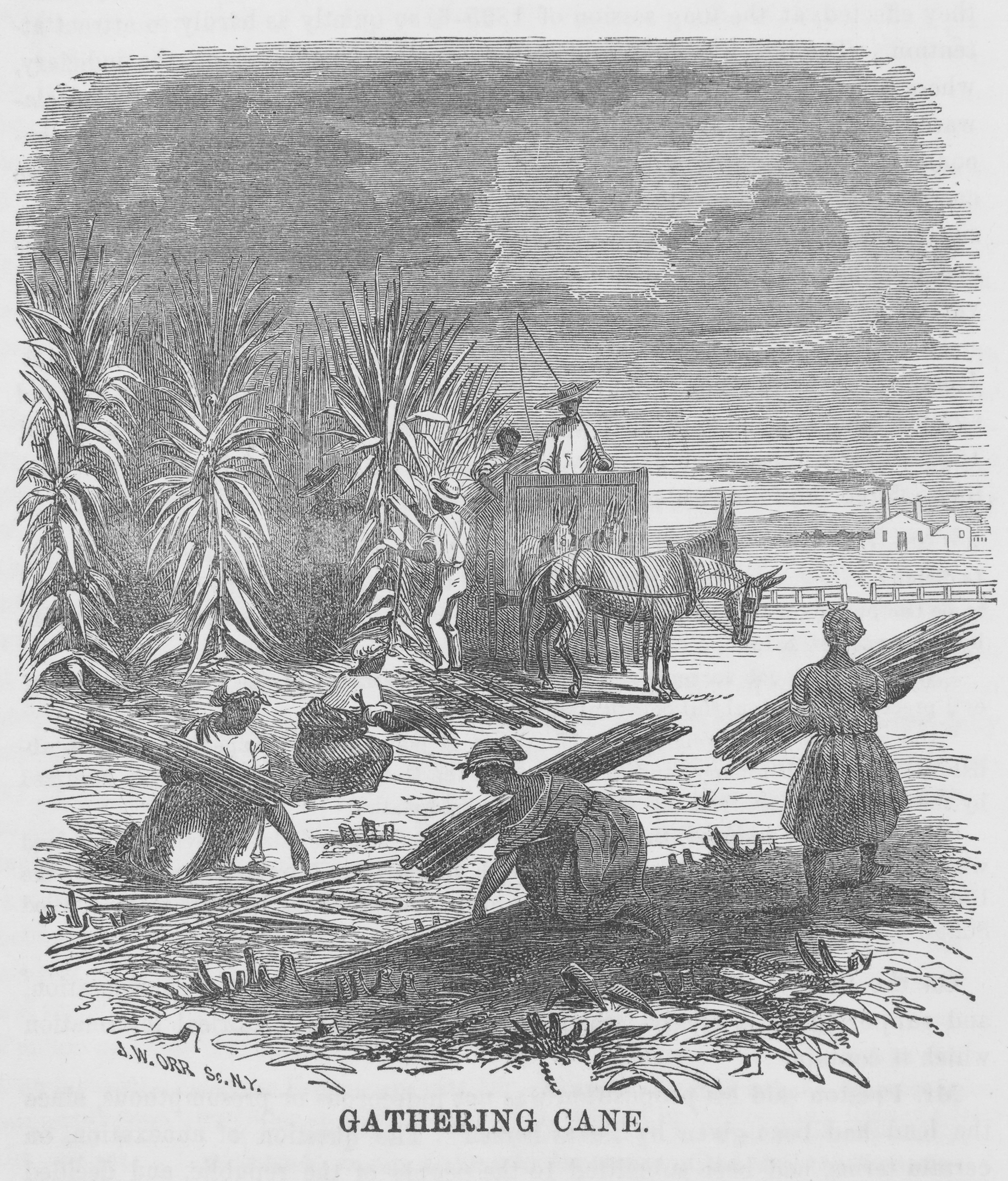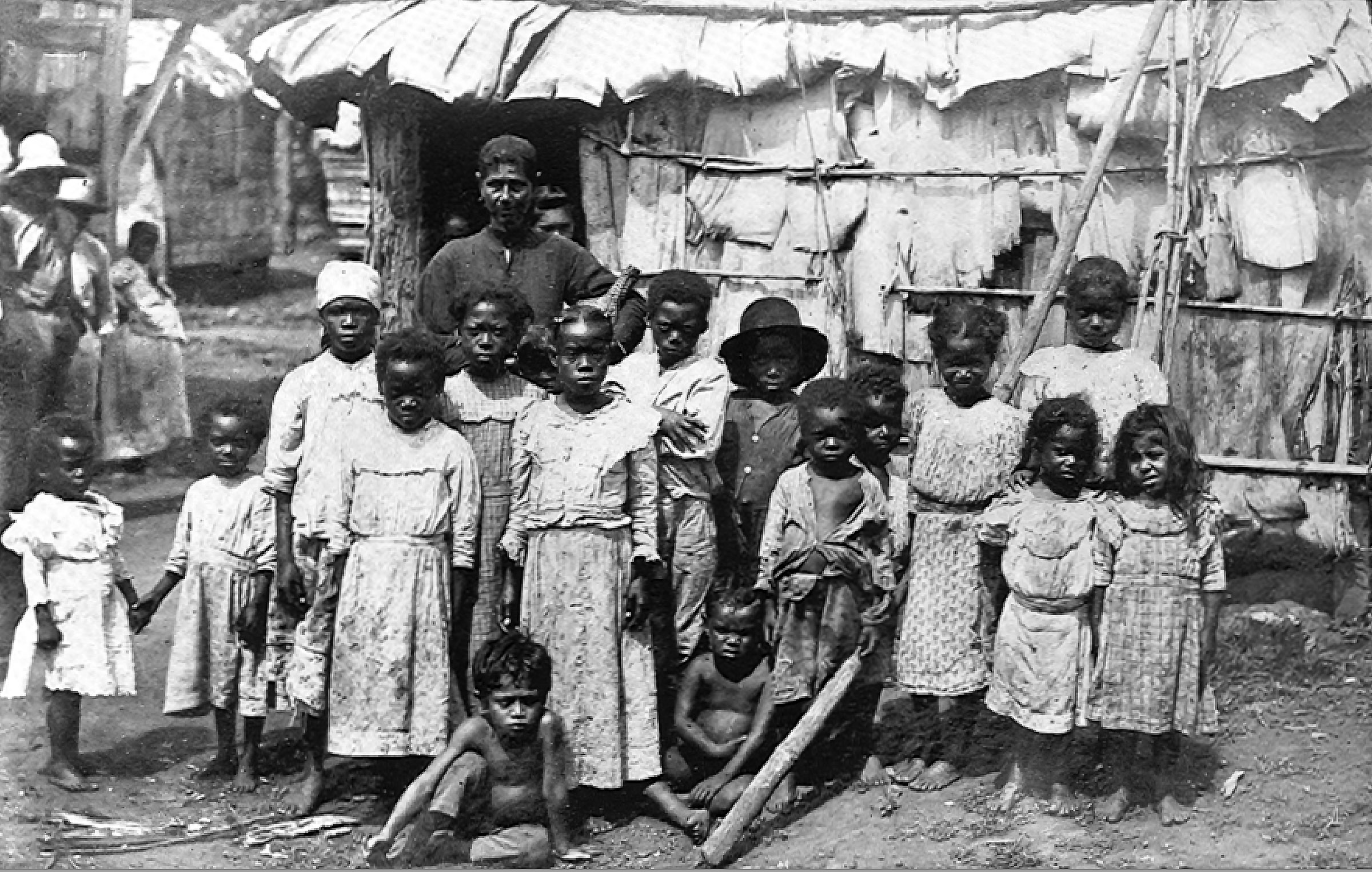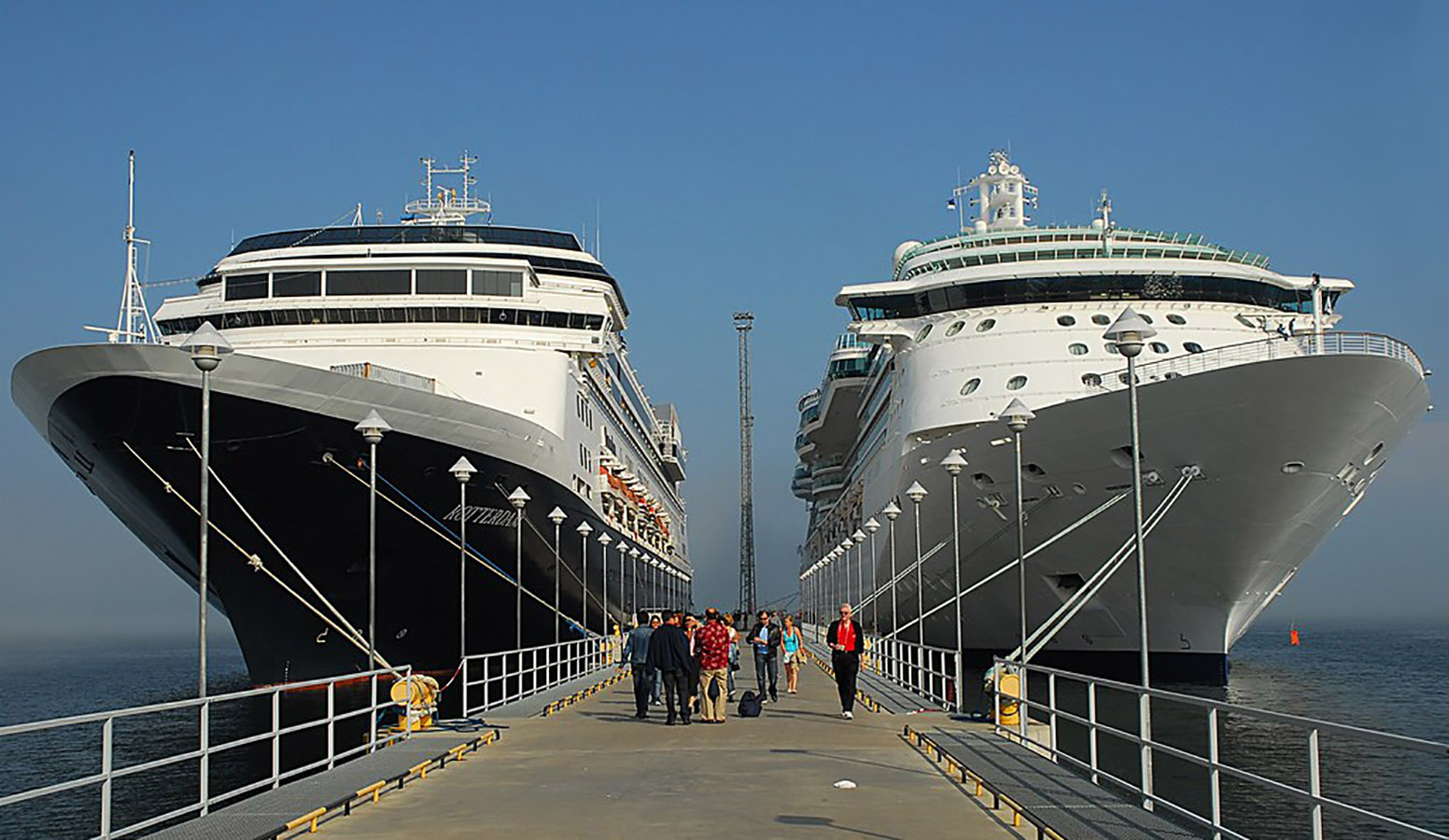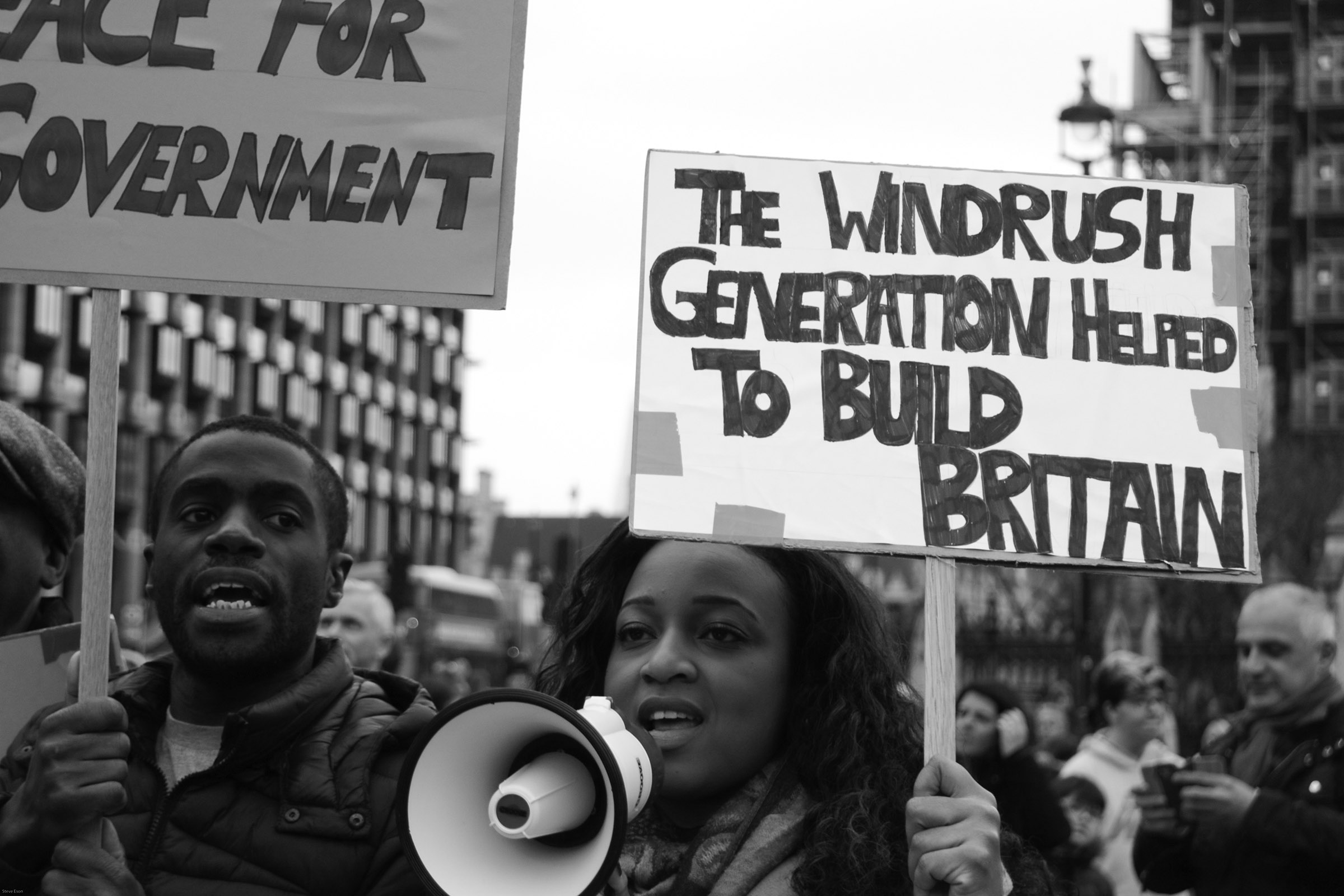Part IV: The Caribbean
Nadine T. Fernandez
The region takes its name from the Indigenous ethnic group Christopher Columbus encountered there: the Caribs. The native population of the Caribbean is estimated to have been around 750,000 before European contact. In 1492, Columbus landed with his three ships on the island of Hispaniola, now divided into the countries of Haiti and the Dominican Republic. The Indigenous peoples—such as the Arawak, Tainos, and Caribs—had no immunities to European disease, and through illness, warfare, and enslavement, their populations were virtually wiped out.
It is difficult to know the gender systems of the Indigenous populations of the Caribbean as they were decimated by the colonial conquest of the islands. However, we can glean some knowledge from small-scale hunter-gatherer societies in other parts of the world. In many foraging societies, gender relations tend to be more egalitarian and complementary. Whatever gender ideologies may have been prevalent among the Indigenous Tainos, Arawak, and Carib populations, little to no trace of these remained after conquest.
Colonial Era
Colonialism thrived in the region. The many islands and coastal areas were accessible to European ships, which could easily sail into a cove or bay to make port and claim the island for their home country. After an island or area was claimed, the land was transformed through plantation agriculture. Cash crops—sugarcane, tobacco, cotton, or fruit—were grown for export profits. Most of these crops were not native to the Americas but were imported during colonial times and were planted, tended, and harvested by enslaved Africans.

The resulting trade arrangement is sometimes referred to as the “triangle” trade. Enslaved Africans were shipped to the Americas to produce sugar, cotton, and other raw materials, which were shipped to Europe to produce rum, clothing, and other manufactured goods, which were then shipped back to Africa to trade for more enslaved people who were brought to America to produce more sugar and so on. Europe grew rich not simply on its technological superiority but also on the hard labor of enslaved Africans. Over three centuries, twenty-one million enslaved people were transported from Africa to the Americas.
Table 12.1. Destination of enslaved Africans (1519–1867)
| Source: https://en.wikipedia.org/wiki/Slavery_in_the_United_States | |
| Destination | Percentage |
|---|---|
| British mainland North America | 3.7% |
| British Leeward Islands | 3.2% |
| British Windward Islands and Trinidad (British 1797–1867) | 3.8% |
| Jamaica (Spanish 1519–1655, British 1655–1867) | 11.2% |
| Barbados (British) | 5.1% |
| The Guianas (British, Dutch, French) | 4.2% |
| French Windward Islands | 3.1% |
| Saint-Domingue (French) | 8.2% |
| Spanish mainland North and South America | 4.4% |
| Spanish Caribbean islands | 8.2% |
| Dutch Caribbean islands | 1.3% |
| Northeast Brazil (Portuguese) | 9.3% |
| Bahia, Brazil (Portuguese) | 10.7% |
| Southeast Brazil (Portuguese) | 21.1% |
| Elsewhere in the Americas | 1.1% |
| Africa | 1.4% |
Colonialism in the Caribbean was a deeply gendered institution, and its mark still influences contemporary gender relations in the region (Sanabria 2007). The colonial plantation system brought with it a gendered division of labor that assigned particular tasks as appropriate for men and others that were appropriate for women (Sanabria 2007). Europeans also imposed their ideas about women and sexuality at the time. Namely, women were deemed second-class citizens subject to the rule and control of their fathers and husbands. Rooted in a strongly Christian foundation, colonists and conquistadors were deeply motivated not only by a desire to conquer the “new world” but also to “civilize” and convert the native and enslaved populations to Christianity. This religious perspective denounced any sexual and gender practices that were nonnormative (e.g., premarital sex) or not strictly heterosexual.
The colonial plantation system was particularly concerned with controlling women’s sexuality as a way to maintain racial and class hierarchies (Martínez-Alier 1989). White women produced legitimate heirs to continue family lines of inheritance and privilege. Family honor depended on white women’s chastity before marriage and their fidelity after marriage. The patriarchal (and legal) family was perceived as the essential foundation of a stable society (Sanabria 2007). Men, by contrast, were not subject to the same sexual control, as any children they fathered out of wedlock were “illegitimate” and thus would have no claim or connection to the family wealth.
Under slavery, the imperative to maintain “racial purity” was also a central part of controlling white women’s sexuality. A system of racial subjugation depended on being able to distinguish racial groups. Here we see the intersection of race and class powerfully shaping women’s lives. While racial mixing did occur in the colonial period, it was nearly always between white men and women of color (Indigenous or of African descent). Often these were violent rapes or relations of concubinage between white masters and enslaved women. Their mixed-race offspring born into slavery did not threaten the system: they inherited their mother’s status (free or slave) and as “illegitimate” offspring could not lay claim to their white father’s wealth—although some fathers did recognize and free their mixed-race children (Morrison 2015). On many islands, this type of racial mixing was condoned as it not only increased the population of laborers but also supposedly “improved the race” (adelantar la raza) since the African-descended people were viewed as racially inferior, and “whitening” the population was seen by governments as a way to modernize the nation (Fernandez 2010).

The Spanish were not the only Europeans to take advantage of colonial expansion in the Caribbean. As European powers vied for control of the islands, many of the islands changed hands several times before finally being secured as established colonies (see figure 12.5). The cultural traits of each of the European colonizers were injected into the fabric of the islands they colonized; thus, the languages, religions, and economic activities of the colonized islands reflected those of the European colonizers. The four main colonial powers in the Caribbean were the Spanish, English, Dutch, and French. Other countries that held possession of various islands at different times were Portugal, Sweden, and Denmark. The United States became a colonial power when they gained Cuba and Puerto Rico as a result of the Spanish-American War, which ended in 1898. The US Virgin Islands were purchased from Denmark in 1918. Sweden controlled the island of St. Barthélemy from 1784 to 1878 before trading it back to the French, who had been the original colonizer. Portugal originally colonized Barbados before abandoning it to the British (University of Minnesota 2016).
Table 12.2. Historical Caribbean Colonizers
| Colonizer | European colonies |
|---|---|
| Spain | Cuba, Dominican Republic, Puerto Rico |
| British | Bahamas, Jamaica, Cayman Islands, Turks and Caicos Islands, Antigua, Dominica, St. Lucia, St. Vincent, Grenada, Barbados, Virgin Islands, Trinidad and Tobago, Montserrat, Anguilla, St. Kitts and Nevis |
| Dutch | Curaçao, Bonaire, Aruba, St. Eustatius, Saba and Sint Maarten (southern half) |
| French | Haiti, Guadeloupe, Martinique, St. Martin (northern half), St. Barthélemy |
| United States | Puerto Rico, Virgin Islands, Cuba |
The abolition of slavery in the latter half of the 1800s and the cultural revolutions that occurred challenged the plantation system and brought about land reform. Plantations were transformed into either multiple private plots or large corporate farms. Once slavery became illegal, the colonial powers turned to other sources of cheap labor, including indentured laborers from their Asian colonies and immigrants from China. Cuba was the destination for over one hundred thousand Chinese workers (Havana can claim the first Chinatown in the Western Hemisphere). Laborers from the British colonies of India and other parts of South Asia also arrived in the Caribbean. Currently, about 40 percent of the population of Trinidad can claim South Asian heritage, and many follow the Hindu faith. Colonialism and plantation agriculture resulted in the ethnic, racial, linguistic, and religious diversity that is the hallmark of the Caribbean today. This legacy has meant that the Caribbean has been a global crossroads for centuries.
Modern Context and Independence
In the twentieth century, many of the Caribbean islands gained independence, but some remained Crown colonies of their European colonizers with varying degrees of autonomy. For many countries, the road from colony to independent republic has been arduous, at best. Haiti, for example, became the first Black independent republic in the Western Hemisphere after the enslaved population successfully revolted, overthrowing the French in 1804. However, rather than welcoming this new republic, the United States, the French, and other European powers resented Haitians for their uprising and feared it would spark more slave revolts throughout the Caribbean. (Remember, Thomas Jefferson, the US president at the time, was a slave owner.) The United States and other nations refused to recognize Haiti’s sovereignty. They refused to trade with the newly independent nation. The French threatened to attack and forced the Haitians to pay $21 billion to compensate French slave owners for their “lost property.” It took the Haitians over one hundred years to pay off the debt. So they entered the twentieth century billions of dollars in debt, with no money to fund schools, hospitals, roads, and other essentials of a prosperous nation (Wesch 2018). As a result, even today over 40 percent of the population is illiterate; 25 percent live on less than $2 per day; 30 percent are food insecure. Almost 8 percent of babies will not live to their fifth birthday (http://uis.unesco.org/en/country/ht).
In the aftermath of the Haitian revolution, the United States implemented the Monroe Doctrine in 1823, designed to deter the former European colonial powers from engaging in continued political activity in the Americas and simultaneously giving the United States the right to intervene in the region. In 1898 the United States fought Spain in the Spanish-American War, which was really Cuba’s war of independence. At the conclusion of the war, Spain lost its colonies of Cuba, Puerto Rico, and others to the United States. Cuba, instead of gaining independence, was then occupied by the United States for several years. Puerto Rico continues to be under US jurisdiction and is neither an independent country nor a US state, though its residents are US citizens. Over the twentieth century, continued US intervention in the region has supported oppressive dictators such as Trujillo in the Dominican Republic, Papa Doc Duvalier in Haiti, and Batista in Cuba. All of these autocrats stifled democracy and kept most of their populations in poverty while enriching the private coffers of a small elite.
In many Caribbean nations after independence, white or lighter-skinned elites retained power. In many ways, gender roles and the emphasis on male privilege were strengthened as these new nations sought to legitimize themselves in the eyes of the world. Governing elites believed that strong patriarchal families were necessary to build a strong nation-state (Sanabria 2007). Large-scale export agriculture and a strong gendered division of labor continued on many islands after independence, helping to keep women and people of color in subordinate positions. Indeed, we still see the strong patriarchal tendencies as expressed through gender violence in the region. In some countries, such as Haiti, the minority mulatto/mixed-race segment of the population makes up the power base and holds political and economic advantage over the rest of the country; meanwhile, the working poor at the bottom of the pyramid comprise most of the population. Across the Caribbean, the lower economic classes often contain the highest percentage of people of African heritage or those with the darkest skin.
In Cuba, women played an active role in the 1959 revolution that overthrew the US-backed dictator Batista and brought the socialist regime of Fidel Castro to power. Socialist Cuba by no means completely eliminated gender or racial inequality, but social reforms in health care, education, and housing greatly reduced health, educational, and income inequality across the population. After the revolution, the state sought to actively incorporate women into the Communist Party, the workforce, and the state through organizations like the Federation of Cuban Women (FMC). Female revolutionary activity was not incompatible with motherhood, nevertheless the Cuban revolution remained “masculine” (Sanabria 2007).
In the twentieth century, independent Caribbean nations continued to be concerned with controlling women’s sexuality, which was tied to morality, “modernity,” and national progress. In Puerto Rico (a US protectorate), there were government campaigns to control poor women’s fertility, which was seen as a social problem; these campaigns included widespread sterilizations from the 1930s to 1970s (Lopez 2008). The government also sought to promote “proper” childrearing and formal (legal) marriages (Sanabria 2007). Nonetheless, attempts by governments and elites to promote a strong patriarchal family were never fully successful (Safa 1995). According to Dore (1997), depending on the country, region, and class position, 25 percent to 50 percent of households in the nineteenth-century Caribbean were matrifocal: that is, headed by women (Dore 1997). Mothers and their children formed the basis of the family unit, and women relied on female relatives to help care for their families (Blank 2013). Thus the “proper” nuclear family for much of Caribbean history was mostly visible in the middle and upper classes. In some cases, this was partly due to the cost of a legal marriage, which in nineteenth-century Cuba, for example, kept some long-term consensual unions from formal matrimony (Morrison 2015).
Today, female-headed households continue to make up a significant portion of families in many Caribbean nations, especially among the poorer, more marginalized segments of the population. While these households often face significant economic hardships, women do have considerable control over resources and decision-making power. State power is rarely absolute, and dominant gender ideologies are never uniformly espoused by all segments of the population. Indeed, we see that stereotypes of “ideal men and women” and the “ideal family” seldom reflect actual people’s gendered, raced, and classed lives.
Despite the strong role of women in the family, Caribbean societies remain predominantly patriarchal. Overall, women hold fewer positions of power and leadership in the highest levels of political, economic, and religious realms (Blank 2013). Women account for over 40 percent of the labor force in many Caribbean nations (Fetterolf 2017). Though often in low-wage jobs, women began replacing men as principal breadwinners in the 1980s (Safa 1995). Women also make up a large percentage of workers in the informal sectors (such as hairdressers, seamstresses, traders, etc.). Some scholars suggest that as a result of this shift, men in the region feel threatened as they can no longer uphold the role of as the financial provider and head of a household (Safa 2001). Some men may be responding to the erosion of their economic power through acts of domestic violence and high rates of substance abuse (Blank 2013).
The economy of the region is no longer based on monocrop export agriculture, which dominated most of the islands from colonial times through the 1970s. Today, the islands vary dramatically in levels of wealth (as measured by GDP per capita). The offshore banking and financial industry has made some countries such as the Cayman Islands, the Bahamas, Turks and Caicos, and the Virgin Islands quite wealthy, but many of the more populous countries (e.g., Cuba, Dominican Republic, Haiti, and Jamaica) are markedly poorer (Faure 2018). The economies of all countries in the region are still deeply shaped by global flows of people. Today two flows in particular play key roles in the islands’ economic, social, and political development, namely: tourism and migration.
In most countries across the region, the global tourism industry is now the main economic engine. Technological developments and the rise of air travel birthed this massive international industry capitalizing on the physical beauty of the islands and the tropical weather. The economic benefits of tourism have been mixed for most of the islands. While the mainstay of most island economies, the large cruise ships and pleasure crafts can overtax the environment; and there have been occasions where there were actually more tourists than citizens on an island. An increase in tourist activity brings with it an increase in environmental pollution (University of Minnesota 2016).

Most people in the Caribbean still live below the poverty line, and the investment in tourism infrastructure, such as exclusive hotels and five-star resorts, takes away resources that could be allocated to schools, roads, medical clinics, and housing. However, without the income from tourism, there would be no money for infrastructure. Tourism attracts people who can afford to travel. Most of the jobs in the hotels, ports, and restaurants where wealthy tourists visit employ people from poorer communities at low wages. There is a stark disparity between the rich tourists and the poor workers. Local businesses in the Caribbean do gain income from tourists who spend their money there; however, the big money is in the cruise ship lines and the resort hotels, which are mainly owned by international corporations or the local wealthy elite (University of Minnesota 2016).
Table 12.3. Caribbean 2017 Statistics
| COUNTRY | # Tourist Arrivals* | Tourism as % of GDP** | % of population below poverty line** | Public Debt as % of GDP** | Remittances as % of GDP*** |
|---|---|---|---|---|---|
| Bahamas | 6,136,000 | 50 | 9.3 | 54.6 | NA |
| Cayman Islands | 2,147,000 | 70 | 1.9 | NA | NA |
| Cuba | 4,654,000 | 10.4 | NA | 47.7 | NA |
| Dominican Republic | 7,296,000 | 11 | 30.5 | 37.2 | 7 |
| Grenada | 468,000 | 44.6 | 38 | 70.4 | 4 |
| Haiti | 1,262,000 | 7 | 58.5 | 31.1 | 23 |
| Jamaica | 4,276,000 | 20 | 17.1 | 101 | 14 |
| St. Lucia | 1,064,000 | 65 | 25 | 70.7 | 1.67 |
| Trinidad & Tobago | 464,000 | 3.3 | 20 | 41.8 | .68 |
| Puerto Rico | 3,600,000 | 7 | 43 | 51.6 | NA |
Tourism is a powerful force of contemporary globalization, as it greatly accelerates the flow of money, technologies, ideas, and bodies across national borders. International tourists flock to the islands to enjoy the sea and sun but also often to engage in sexual adventures. Here again we see the intersection of race, gender, and class emerge as local populations are eroticized and marketed along with the white sand beaches. Local men and women become involved in sex and romance tourism as a way to better their lives and possibly escape poverty through migration via marriage to a foreigner (Cabezas 2009; Roland 2011; Brennan 2004; Fernandez 2019). Tourism can be seen as a new colonizing force, one that alters both the economic and social relations of the entire region.
While tourism brings millions of foreigners to the islands in the Caribbean as temporary visitors, for decades thousands of islanders themselves have been migrating out of their countries to seek prosperity and security abroad. Emigration has long affected the Caribbean, and we find well-established Caribbean communities in England, Canada, and the United States, such as the Cubans in Miami and Puerto Ricans and Dominicans in New York City. More than 750,000 people of Caribbean origin live in Canada largely from Jamaica, Guyana, Trinidad and Tobago, and Haiti (Labelle, Larose, and Piché 2010). Most reside in the cities of Toronto and Montreal.
Much of the emigration has followed historical colonial links. As posters in 1970s Britain noted succinctly, “We are here because you were there.” That is, communities of African and Asian descent are in England because the British had colonized their homelands and transported enslaved Africans to their colonies in the Caribbean. Often migrants were recruited to address labor shortages in former colonial powers, such as the Windrush Generation (1948–71) who came to Britain after World War II. The Windrush Generation is named after the ship that brought them to Britain, the Empire Windrush. In 2018 some of these migrants and their children, largely from Jamaica, Trinidad and Tobago, and Barbados, who have lived and worked for decades in Britain, were wrongly denied rights and benefits and were threatened with deportation in what became known as the “Windrush scandal.”

Migrants emigrating from the Caribbean are often the educated and the young workers. As Faure (2018) notes, “Between 1965 and 2000 about 12% of the labour force of the Caribbean region has emigrated to OECD countries, which is almost twice the rate for Central America (i.e. 7%), and six times the average rate for developing countries (i.e. 2%).” While this can lead to a damaging brain drain depleting the small countries of their most educated and capable workforce, migrants also send money home in the form of remittances, which for some countries (like Haiti) are an important component of the national economy. Many migrants circulate, traveling and living transnational lives while bringing skills and capital from abroad to foster trade and business in the Caribbean. Some migrants also return to their home countries to retire. We also see the gendered aspect of migration, as many Caribbean women migrate to the United States and Europe and find work as nurses, nannies, caregivers, and domestic workers. Women are seen as an inexpensive and docile labor force, and the jobs available to them are insecure and low wage.
Some Caribbean migration flows are the result of natural disasters (e.g., 2010 earthquake in Haiti, 2017 Hurricane Maria in Puerto Rico) or political upheavals that have forced millions of people to emigrate to the United States. The Cuban Revolution of 1959, the Mariel boatlift of 1980, and the Cuban rafter crisis of 1994 each brought tens of thousands of Cubans to the United States. People seeking freedom from political oppression and dictatorships in Haiti and the Dominican Republic also came to America. In recent years, natural disasters have devastated countries like Haiti and Puerto Rico, which lack the infrastructure and capital to effectively respond to and recover from the destruction. In the wake of Hurricane Maria, thousands of Puerto Ricans (who are US citizens) relocated to the mainland United States to rebuild their lives.
Sexual and Gender Diversity
From the colonial legacy, the region has strong patriarchal roots that have contributed to cultures that do not always embrace sexual and gender diversity. Popular cultural expressions such as dancehall music can be deeply misogynistic and homophobic (see chapter 14). In general, societal acceptance of LGBTQ people is rare, and LGBTQ issues are taboo in many Caribbean nations (Human Rights Watch 2017). Most of the former British colonies still have laws that criminalize same-sex relations (known as “buggery or gross indecency laws”) leftover from British colonial rule. While these laws are vaguely worded and do not explicitly mention gender identity or expression, police and law enforcement often conflate gender identity with sexual orientation and, as a result, these laws can at times be used to criminalize gender identity that does not correspond with the norms associated with the sex assigned at birth. However, in recent years a growing movement for LGBTQ rights activism is spreading across the region. In 2016, for example, Trinidad and Tobago repealed “buggery laws.” In other countries including Jamaica, Barbados, and Dominica, activist groups and individuals have launched cases to repeal similar laws in their penal codes (Human Rights Watch 2017).
Cuba has been more progressive in recognizing LGBTQ rights in recent years. While in the early years of the Cuban Revolution gay men (and others deemed socially marginal) were sent to work camps. Military Units to Aid Production (UMAP) were agricultural labor camps operated by the Cuban government from November 1965 to July 1968. People sent to the work camps included homosexuals, conscientious objectors to the mandatory military service, Christians and other religious believers, and antirevolutionaries. In the last ten years the country has made a number of important advances to secure LGBTQ rights. For example, the country guarantees free sex-change operations and forbids discrimination based on sexual orientation.
However, support of LGBTQ rights is far from universal in the Spanish-speaking Caribbean. In 2019 the Cuban government proposed an amendment to the constitution to legalize same-sex marriage, but evangelical churches on the island, a growing force, protested. The amendment did not pass, but the government vowed to address the issue through changes in the country’s civil code rather than in the constitution. In 2010 the Dominican Republic banned same-sex marriage in its constitution. LGBTQ people in many parts of the Spanish-speaking Caribbean are subject to violence and discrimination based on their sexual orientation and/or gender identity. Activists across the Caribbean are working to repeal discriminatory laws and end the marginalization of LGBTQ people.
Conclusion
As we learn in other chapters of this book, globalization is not a new phenomenon, and the Caribbean region has been “global” since Columbus arrived in 1492. The centuries of European colonial rule and subsequent US interventions, the plantation agriculture system, and most notably the slave trade have had a profound impact on all aspects of life on the islands today, from the economy to family relations. Large-scale incoming (enslaved Africans) and outgoing migrations (contemporary political, climate, and economic migrants) continue to shape the islands with roughly 22 percent of the Caribbean population living abroad (mainly in the United States, United Kingdom, and Canada) (Faure 2018). In the twenty-first century, the island nations continue to struggle with violence against women, gender inequalities, and LBGTQ acceptance with the ongoing dominance of patriarchy.
The chapters in Part IV: The Caribbean present anthropological research that showcases the legacy of the strong patriarchal history of colonialism in the region. Chapter 13 explores the lavish quinceañera (fifteenth) birthday parties for girls in Cuba. These parties, celebrated throughout the Spanish-speaking world, traditionally mark a girl’s eligibility for marriage. Today, the parties provide a stage for the girls to display their physical and sexual (heterosexual) attractiveness, while allowing families to demonstrate their socioeconomic status. Emerging class disparities in Cuba are evident in the money and resources families have available to host these festivities for their daughters. Chapter 14 explores the construction of masculinities among Jamaican men. Displays of heterosexual prowess are a key element of male identity, and men assert their power and status through sexual relations with multiple female partners. These sexual behaviors are enshrined in popular culture through dancehall music whose lyrics celebrate male sexual conquests and at times violence toward women.
Key Terms
brain drain: the phenomenon of well-educated, skilled workers emigrating from countries in the Global South to countries in the Global North where they have prospects for better pay and living conditions.
conquistadors: leaders of the Spanish conquest of the Americas during the fifteenth to sixteenth centuries.
emigration: the act of leaving one’s home country to permanently settle in another country.
OECD: Organisation for Economic Co-operation and Development is an intergovernmental economic organization with thirty-six member countries. Members are developed countries with thriving economies.
remittances: money or goods sent by migrants back to family and friends in their home country.
Resources for Further Exploration
- Alvarez, Julia. 2010. In the Time of the Butterflies. New York: Algonquin.
- Danticat, Edwidge. 2008. Brother, I’m Dying. New York: Vintage.
- Farmer, Paul. 1992. AIDS and Accusation: Haiti and the Geography of Blame. Berkeley: University of California Press.
- Kincaid, Jamaica. 2000. A Small Place. New York: Farrar, Straus and Giroux.
- Slocum, K., and Thomas, D. A. 2003. Rethinking Global and Area Studies: Insights from Caribbeanist Anthropology. American Anthropologist, 105: 553–565. doi:10.1525/aa.2003.105.3.553.
Bibliography
Blank, Sharla. 2013. “An Historical and Contemporary Overview of Gendered Caribbean Relations.” Journal of Arts and Humanities 2, no. 4: 1–10.
Brennan, Denise. 2004. What’s Love Got to Do with It? Transnational Desires and Sex Tourism in the Dominican Republic. Durham, NC: Duke University Press.
Cabezas, Amalia. 2009. Economies of Desire: Sex and Tourism in Cuba and the Dominican Republic. Philadelphia: Temple University Press.
Dore, Elizabeth. 1997. “The Holy Family: Imagined Households in Latin American History.” In Gender Politics in Latin America, edited by Elizabeth Dore, 101–17. New York: Monthly Review.
Faure, Aymeric. 2018. Migratory Patterns in the Caribbean: Impacts and Perspectives for Caribbean Countries. Open Diplomacy. http://www.open-diplomacy.eu/blog/migratory-patterns-in-the-caribbean-impacts-and-perspectives-for-caribbean.
Fernandez, Nadine T. 2010. Revolutionizing Romance: Interracial Couples in Contemporary Cuba, 45. New Brunswick, NJ: Rutgers University Press.
———. 2019. “Tourist Brides and Migrant Grooms: Cuban–Danish Couples and Family Reunification Policies.” Journal of Ethnic and Migration Studies 45, no. 16: 3141–56.
Fetterolf, Janell. 2017. In Many Countries, at Least Four-in-Ten in the Labor Force Are Women. Fact Tank: News in the Numbers. https://www.pewresearch.org/fact-tank/2017/03/07/in-many-countries-at-least-four-in-ten-in-the-labor-force-are-women/.
Human Rights Watch. 2017. “I Have to Leave to Be Me” Discriminatory Laws against LGBT People in the Eastern Caribbean. New York: Human Rights Watch. https://www.hrw.org/report/2018/03/21/i-have-leave-be-me/discriminatory-laws-against-lgbt-people-eastern-caribbean.
Labelle, M., Serge Larose, and V. Piché. 2010. Caribbean Canadians. The Canadian Encyclopedia. https://www.thecanadianencyclopedia.ca/en/article/caribbean-canadians.
Lopez, Iris. 2008. Matters of Choice: Puerto Rican Women’s Struggle for Reproductive Freedom. New Brunswick, NJ: Rutgers University Press.
Martínez-Alier, Verena. 1989. Marriage, Class, and Colour in 19th Century Cuba: A Study of Racial Attitudes and Sexual Values in a Slave Society. Ann Arbor: University of Michigan Press.
Morrison, Karen Yvette. 2015. Cuba’s Racial Crucible: The Sexual Economy of Social Identities, 1750–2000. Bloomington: Indiana University Press.
Roland, L. Kaifa. 2011. Cuban Color in Tourism and La Lucha: An Ethnography of Racial Meanings. New York: Oxford University Press.
Safa, Helen. 1995. The Myth of the Male Breadwinner: Women and Industrialization in the Caribbean. Boulder: Westview.
Sanabria, Harry. 2007. The Anthropology of Latin America and the Caribbean. Boston: Pearson.
University of Minnesota. 2016. World Regional Geography: People, Places and Globalization. https://open.umn.edu/opentextbooks/textbooks/world-regional-geography-people-places-and-globalization.
leaders of the Spanish conquest of the Americas during the fifteenth to sixteenth centuries.
the act of leaving one’s home country to permanently settle in another country.
Organisation for Economic Co-operation and Development is an intergovernmental economic organization with thirty-six member countries. Members are developed countries with thriving economies.
the phenomenon of well-educated, skilled workers emigrating from countries in the Global South to countries in the Global North where they have prospects for better pay and living conditions.
money or goods sent by migrants back to family and friends in their home country.


